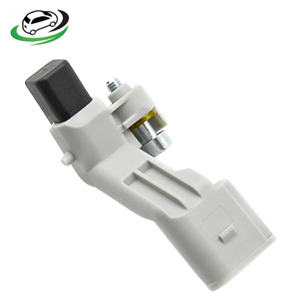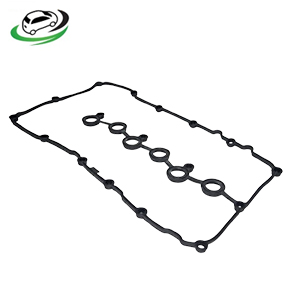-18%
Get Valve Cover Gasket Audi Q7 (4LB)3.6FSI 2007-2015 / VW CC 3.6 FSI/Touareg 3.6L/Phaeton 3.6L/Magotan 3.6L 03H103483C
The valve cover gasket is an essential component in an internal combustion engine, playing a critical role in maintaining engine performance and reliability. It serves as a seal between the valve cover and the engine’s cylinder head, preventing oil leaks and ensuring proper engine operation. This guide will cover the valve cover gasket’s function, construction, types, symptoms of failure, diagnosis, and replacement.
What is a Valve Cover Gasket?
The valve cover gasket is a sealing component located between the valve cover and the cylinder head of an engine. Its primary function is to prevent engine oil from leaking out of the top of the engine where the valve cover meets the cylinder head. It also helps to keep dirt and debris from entering the engine and ensures that the engine maintains proper oil pressure.
Functions of the Valve Cover Gasket
The valve cover gasket performs several critical functions in the engine:
- Preventing Oil Leaks: The primary function of the valve cover gasket is to create a tight seal between the valve cover and the cylinder head. This prevents engine oil from leaking out of the engine, which could lead to oil loss and potential damage to engine components.
- Maintaining Oil Pressure: By sealing the valve cover, the gasket helps maintain proper oil pressure within the engine. Consistent oil pressure is essential for lubricating engine components and ensuring smooth engine operation.
- Protecting Engine Components: The valve cover gasket prevents contaminants, such as dirt and debris, from entering the engine. This protection helps keep the engine clean and ensures that internal components remain free from harmful contaminants.
- Reducing Engine Noise: The gasket helps to dampen engine noise by providing a cushioning effect between the valve cover and the cylinder head. This can contribute to a quieter engine operation.
- Preventing Engine Overheating: The gasket also helps to maintain proper engine temperature by preventing oil leaks that could lead to overheating.
Construction of the Valve Cover Gasket
The valve cover gasket is typically made of materials designed to withstand high temperatures and resist oil degradation. Key components of a valve cover gasket include:
- Gasket Material: The gasket material is usually made from one of the following materials:
- Rubber: Rubber gaskets are flexible and provide a good seal. They are commonly used in many engines due to their durability and resistance to oil and heat.
- Cork: Cork gaskets are often used in older engines. They provide a good seal but may become brittle and deteriorate over time.
- Silicone: Silicone gaskets offer excellent heat resistance and flexibility. They are often used in high-performance or modern engines.
- Composite Materials: Some gaskets are made from composite materials that combine rubber, fiber, and other substances to provide a durable and effective seal.
- Reinforcement: Some valve cover gaskets have metal or fiber reinforcements to enhance their strength and durability. Reinforcements help prevent the gasket from deforming under high temperatures and pressures.
- Sealant: In some cases, the gasket may be pre-coated with a sealant or adhesive to improve its sealing properties and make installation easier.
Types of Valve Cover Gaskets
Valve cover gaskets come in various types based on their design and material:
- Flat Gaskets: Flat gaskets are the most common type and are used in engines with a flat valve cover surface. They provide a simple and effective seal between the valve cover and cylinder head.
- Reusable Gaskets: Reusable gaskets are designed to be removed and reinstalled multiple times. They are typically made from materials like silicone or rubber and can be used in engines that require frequent maintenance.
- One-Piece Gaskets: One-piece gaskets cover the entire perimeter of the valve cover. They provide a continuous seal and are often used in modern engines to reduce the risk of leaks.
- Multi-Piece Gaskets: Multi-piece gaskets consist of several segments or pieces that fit together to form a complete seal. They are used in engines with complex valve cover designs and provide flexibility in sealing different areas.
Symptoms of a Failing Valve Cover Gasket
A failing valve cover gasket can lead to several issues that affect engine performance and reliability. Common symptoms of a faulty valve cover gasket include:
- Oil Leaks: One of the most obvious signs of a failing valve cover gasket is oil leakage around the edges of the valve cover. You may notice oil pooling on the engine surface or dripping onto other engine components.
- Burning Oil Smell: If the oil leaks onto hot engine components, such as the exhaust manifold, it can produce a burning oil smell. This odor may be noticeable inside the vehicle or in the engine bay.
- Engine Misfire: A leaking valve cover gasket can allow oil to enter the spark plug wells, leading to misfires or rough engine performance. This occurs because the oil can short-circuit the spark plugs, affecting ignition.
- Low Oil Levels: Continuous oil leaks from a failing valve cover gasket can lead to low oil levels. Regularly check your oil level and add oil as needed to prevent engine damage.
- Check Engine Light: In some cases, a failing valve cover gasket can trigger the check engine light. The engine control unit (ECU) may detect misfires or other issues related to the oil leak.
- Engine Overheating: A significant oil leak can lead to reduced oil levels and inadequate lubrication, potentially causing engine overheating. Monitor the engine temperature and address any overheating issues promptly.
Diagnosing a Faulty Valve Cover Gasket
Diagnosing a faulty valve cover gasket typically involves the following steps:
- Visual Inspection: Perform a visual inspection of the valve cover and surrounding areas for signs of oil leaks or pooling. Check for oil residue or drips around the edges of the valve cover.
- Check for Oil Accumulation: Inspect the spark plug wells for signs of oil accumulation. If you notice oil around the spark plugs, it may indicate a leaking valve cover gasket.
- Monitor Engine Performance: Pay attention to any changes in engine performance, such as rough idling, misfires, or a burning oil smell. These symptoms can help pinpoint the issue.
- Use a Diagnostic Scanner: Use an OBD-II scanner to check for any diagnostic trouble codes (DTCs) related to engine misfires or oil pressure. The scanner can provide additional insights into potential issues.
- Inspect the Gasket: If possible, remove the valve cover and inspect the gasket for signs of damage, deformation, or wear. Look for any cracks, tears, or missing sections.
Replacing the Valve Cover Gasket
If a valve cover gasket is determined to be faulty, it should be replaced to restore proper engine operation. The replacement process generally involves the following steps:
- Prepare the Vehicle: Ensure the engine is cool before starting the replacement process. Disconnect the battery to prevent any electrical issues during the repair.
- Remove the Valve Cover: Use the appropriate tools to remove the bolts or fasteners securing the valve cover in place. Carefully lift the valve cover off the cylinder head, taking care not to damage the gasket or other components.
- Remove the Old Gasket: Gently remove the old valve cover gasket from the valve cover and the cylinder head. Clean any residual gasket material or sealant from the surfaces.
- Install the New Gasket: Position the new valve cover gasket onto the valve cover or the cylinder head, depending on the gasket design. Ensure that the gasket is properly aligned and seated.
- Reinstall the Valve Cover: Place the valve cover back onto the cylinder head and secure it with the bolts or fasteners. Tighten the bolts to the manufacturer’s specified torque settings, following a crisscross pattern to ensure an even seal.
- Reconnect Components: Reconnect any components that were removed or disconnected during the process. Reconnect the battery and ensure all electrical connections are secure.
- Check for Leaks: Start the engine and monitor the area around the valve cover for any signs of oil leaks. Check the engine’s performance and address any issues promptly.
Choosing the Right Valve Cover Gasket
When selecting a replacement valve cover gasket, consider the following factors:
- OEM vs. Aftermarket: OEM (Original Equipment Manufacturer) gaskets are designed to meet the exact specifications of your vehicle and provide reliable performance. Aftermarket gaskets can vary in quality, so choose a reputable brand if opting for an aftermarket part.
- Compatibility: Ensure that the gasket is compatible with your vehicle’s make, model, and engine configuration. Verify the part number and specifications before making a purchase.
- Quality and Durability: Look for gaskets made from high-quality materials that are resistant to heat, oil, and deformation. A durable gasket will provide a reliable seal and last longer.
- Type and Design: Choose the appropriate type of gasket (flat, reusable, one-piece, or multi-piece) based on your engine’s design and maintenance requirements.
Follow us on Facebook for more parts.



